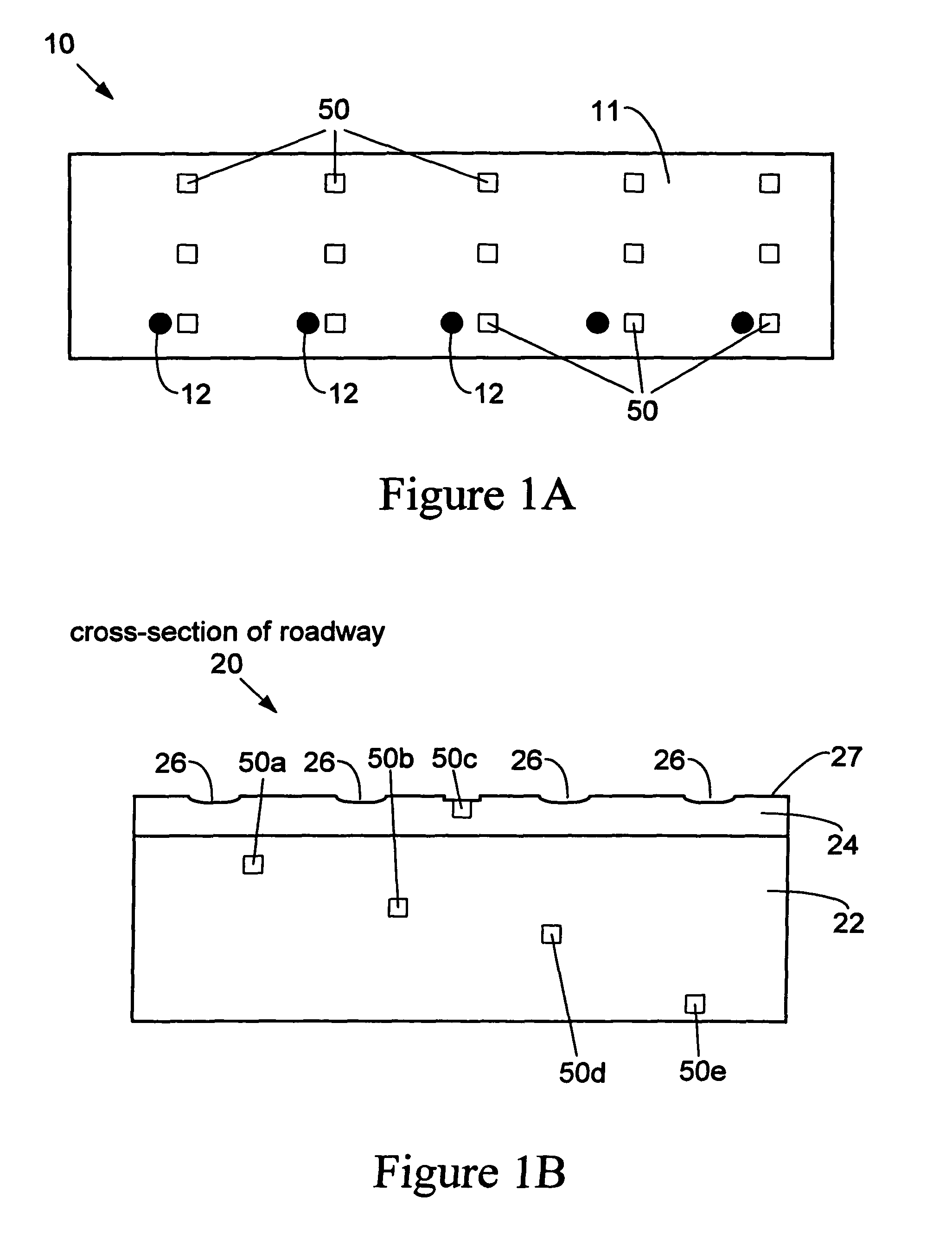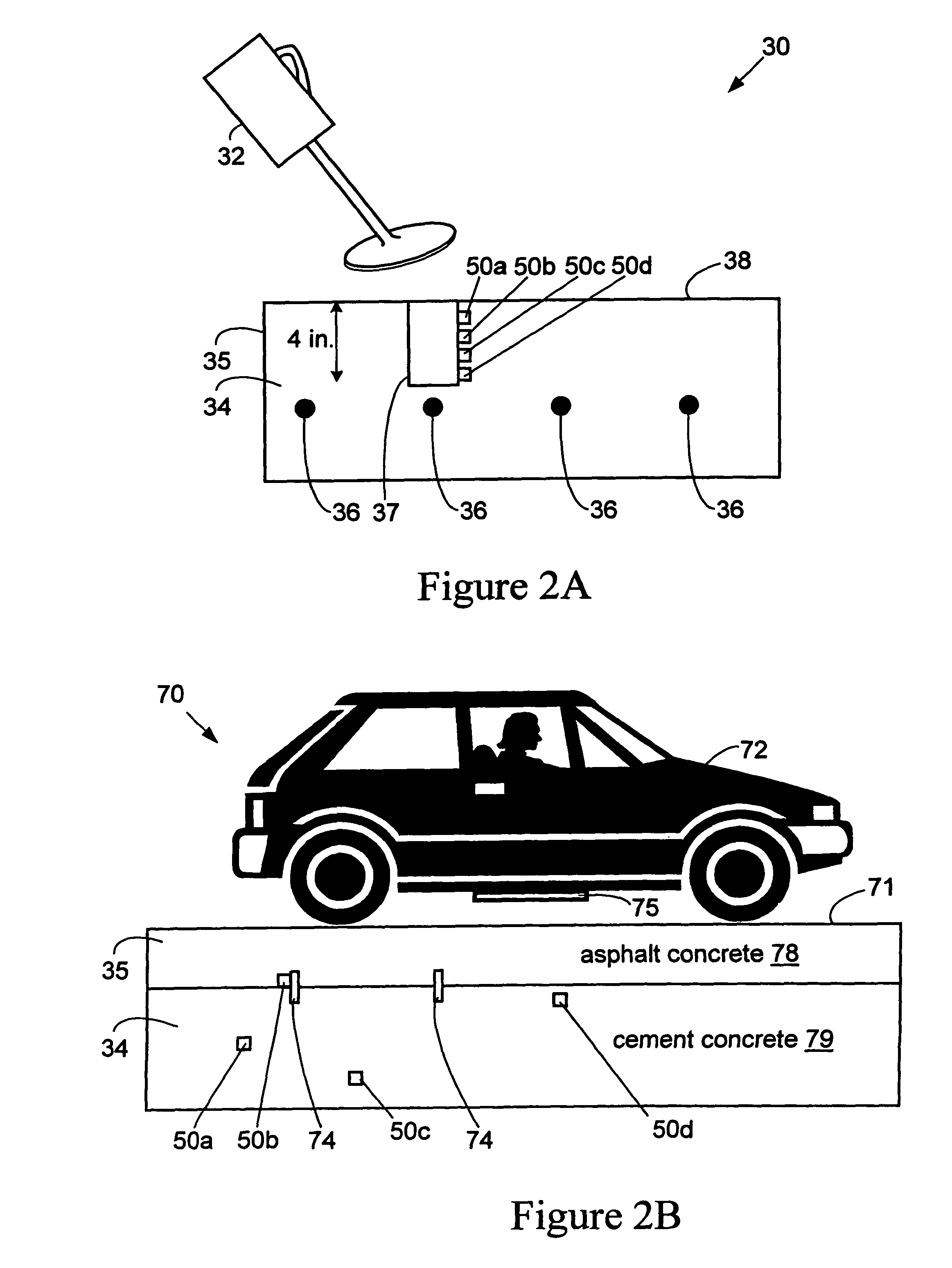Sensor devices for structural health monitoring
a sensor device and structural health technology, applied in the field of sensor technology, can solve the problems of large structure including metal elements, often susceptible to metal corrosion, and conventional sensing techniques that do not provide suitable monitoring solutions, etc., to achieve the effect of simplifying and expediting polling, and reducing the need for battery power and battery maintenan
- Summary
- Abstract
- Description
- Claims
- Application Information
AI Technical Summary
Benefits of technology
Problems solved by technology
Method used
Image
Examples
Embodiment Construction
[0043]The present invention will now be described in detail with reference to a few preferred embodiments thereof as illustrated in the accompanying drawings. In the following description, numerous specific details are set forth in order to provide a thorough understanding of the present invention. It will be apparent, however, to one skilled in the art, that the present invention may be practiced without some or all of these specific details. In other instances, well known process steps and / or structures have not been described in detail in order to not unnecessarily obscure the present invention.
[0044]The present invention is well suited to monitor the health of a large structure or portion thereof. FIG. 1A illustrates a structure portion 10 may be included as part of a building, bridge, road, etc and comprises concrete 11 and metal 12. An array of sensing devices 50 are embedded in structure portion 10 and detect a parameter indicative of the health of...
PUM
| Property | Measurement | Unit |
|---|---|---|
| tensile stress | aaaaa | aaaaa |
| operational depth | aaaaa | aaaaa |
| operational depth | aaaaa | aaaaa |
Abstract
Description
Claims
Application Information
 Login to View More
Login to View More - R&D
- Intellectual Property
- Life Sciences
- Materials
- Tech Scout
- Unparalleled Data Quality
- Higher Quality Content
- 60% Fewer Hallucinations
Browse by: Latest US Patents, China's latest patents, Technical Efficacy Thesaurus, Application Domain, Technology Topic, Popular Technical Reports.
© 2025 PatSnap. All rights reserved.Legal|Privacy policy|Modern Slavery Act Transparency Statement|Sitemap|About US| Contact US: help@patsnap.com



